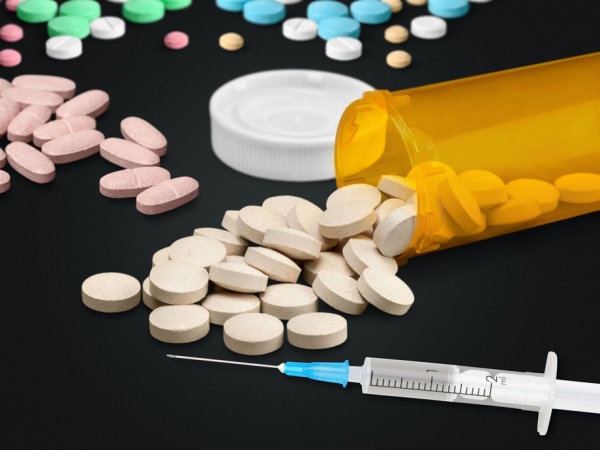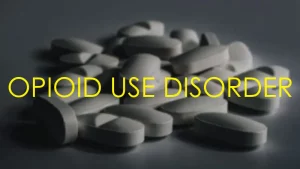Contents
- 1 What Is Opioid Use Disorder?
- 2 Symptoms Of Opioid Use Disorder
- 3 Opioid Overdose
- 4 Neonatal Abstinence Syndrome (NAS)
- 5 Symptoms of NAS
- 6 The Effects of Opioid Use Disorder
- 7 Serious Side Effects Of Opioids
- 8 Causes of Opioid Use Disorder
- 9 Diagnosis Of Opioid Disorder
- 10 Opioid Abuse During Pregnancy
- 11 Treatment Of Opioid Use Disorder
- 12 Prevention Strategies For Opioid Use Disorder
- 13 Conclusion
- 14 A Word From Therapy Mantra
What Is Opioid Use Disorder?
Opioid use disorder is a condition in which a person becomes addicted to opioids, which are painkillers that include prescription drugs such as oxycodone and Vicodin, as well as illegal drugs such as heroin. People with opioid use disorder may take the drugs to relieve pain, but they eventually become addicted and can’t control their drug use.
Opioids are a class of drugs that includes prescription painkillers such as oxycodone and Vicodin, as well as illegal drugs like heroin. People with opioid use disorder become addicted to these drugs and can’t control their drug use. Opioid use disorder is a chronic condition, which means that it is long-lasting and likely to have relapses. That’s why people with opioid use disorder need treatment throughout their lives.
Opioid addiction is a brain disease because the misuse of these drugs changes the structure and physiology of the brain, altering its wiring and how it works. People with opioid addiction have compulsive drug seeking and use, even though they know it’s harmful to them.
Opioid overdose is a medical emergency that can result in death if not treated promptly. Naloxone (Narcan) temporarily reverses the life-threatening effects of opioids on the brain and can help prevent death while the person is taken to the hospital.
Symptoms Of Opioid Use Disorder
Those with opioid use disorder may present a wide variety of signs and symptoms that indicate that they are addicted to opioids or experiencing withdrawal from opioids.
Other signs, which can be related to their specific addiction, include:
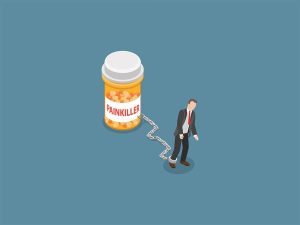
- Opioids are hidden in unusual places
- Frequent nervousness, frustration, irritability, or mood swings
- Needing more of the drug to get high
- Repeatedly using up prescription painkillers or heroin that belong to others
- Lack of interest in activities they used to enjoy
- Short temper with friends and family members
- Changes in relationships resulting from ongoing drug abuse
Physical signs that someone is using opioids include:
- Nausea and vomiting, which can lead to dehydration
- Small, constricted pupils
Reduced appetite, which can lead to poor nutrition and weight loss; this occurs because the body slows its metabolism due to chemicals contained in opioids reducing appetite Drug cravings, which can lead to increased appetite as the addict begins using again
Slowed breathing
People with opioid use disorder often take breaths at a rate of fewer than eight times per minute Shallow and slow breathing (respiratory depression) is a serious problem for those who abuse opioids because it can shut down the respiratory system. Signs that someone’s breathing has slowed include: Snoring Cheyne-Stokes respiration (breathing that stops and starts) Pinpoint pupils
Increased heart rate
People who abuse opioids often have an increased heart rate, even when at rest Respiratory arrest; occurs when someone’s breathing slows to the point where it stops altogether and they suffocate to death
Opioid Overdose
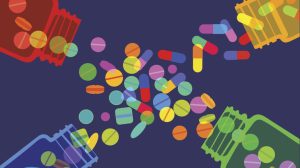
Opioid overdose is a medical emergency that can result in death if not treated promptly. Signs of opioid overdose include:
- Trouble breathing, or slow and shallow breathing (respiratory depression)
- Blue-tinged skin from lack of oxygen
- Pinpoint pupils Death
Anyone who suspects an opioid overdose should seek immediate medical attention.
Opioid abuse during pregnancy can cause serious problems for a mother and her unborn baby. The Centers for Disease Control and Prevention have found that opioid use disorder has been increasing in women, from 1.4 percent in 2003 to 2.9 percent by 2014, along with an increase in neonatal abstinence syndrome (NAS) among infants who are exposed to opioids in utero.
Neonatal Abstinence Syndrome (NAS)
Neonatal abstinence syndrome (NAS) is a group of problems an infant experiences when withdrawing from opioid exposure at birth. The American Academy of Pediatrics recommends that pregnant women who use opioids receive ongoing, comprehensive treatment throughout their pregnancy and for at least one month after the baby is born.
Symptoms of NAS
Symptoms of NAS may include:
- Mottling, or blotchy skin coloration
- Seizures
- Excessive crying, which can last for hours
Poor feeding and weight loss; a failure to gain weight is a common sign that an infant has been exposed to opioids in utero Constipation Lighter-than-normal or bluish skin color
Symptoms of NAS can be treated and most babies do very well, but early diagnosis and treatment are important.
The Effects of Opioid Use Disorder
Opioid use disorder can lead to serious health problems, including addiction and overdose. Addiction is a chronic brain disease that causes compulsive behavior despite harmful consequences. Doctors can treat opioid addiction with counseling or medication. Early treatment helps keep addiction under control and reduces the risk of relapse.
Opioid use disorder, which causes harmful changes in the brain, leads to drug cravings and increased tolerance (needing more of the drug to get the same effect). Without treatment, overdose (which means someone stops breathing) can occur. People at high risk for opioid overdose include those who take high doses of prescription painkillers and those who use heroin.
Serious Side Effects Of Opioids
Opioids may cause serious side effects. Call your doctor if you experience any of these symptoms after using an opioid:
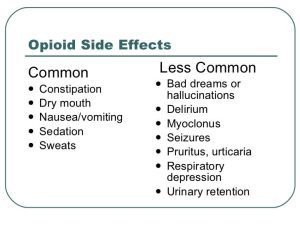
- Severe problem breathing
- Difficulty speaking
- Chest pain
- Slow heartbeat
- Feeling faint Vomiting
If you know someone who is using opioids, speak up. Addiction to opioids (and other substances) is considered a brain disease because it changes your brain chemistry and makes quitting difficult. You can’t force someone to get help for opioid use disorder, but if they hear from people they respect that recovery is possible and available, you may help them get treatment.
Causes of Opioid Use Disorder
There are many reasons why people may start abusing opioids.
- Some people may start using opioids because they are prescribed painkillers for a legitimate medical condition and then become addicted.
- Others may start using opioids because they are easy to get and they provide a feeling of euphoria.
- Some people may start using opioids because they are struggling with mental health issues such as depression or anxiety and find that opioids help them to cope.
- Still, others may start using opioids because they are curious about the effects of drugs or simply want to experiment.
Diagnosis Of Opioid Disorder
If you are experiencing any of the symptoms listed above, it is important to speak with a doctor about your opioid use disorder. The doctor will ask about your medical history and will also perform a physical exam. He or she may also order tests to help diagnose the condition, such as a urine test or blood test.
Once the doctor has determined that you have an opioid use disorder, he or she will develop a treatment plan tailored specifically for you. Treatment for opioid use disorder may include medication, counseling, and/or behavioral therapy. In some cases, the doctor may recommend a gradual reduction of opioid medication under medical supervision.
While there is no cure for opioid use disorder, treatment options have improved significantly in recent years. With proper care and support from family and friends, many people can recover from opioid addiction and lead happy and productive lives.
Opioid Abuse During Pregnancy
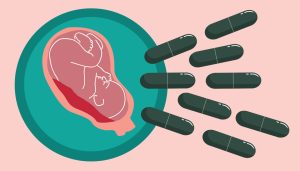
Opioid abuse during pregnancy is a serious problem that can have devastating consequences for both the mother and the baby. Opioids are substances that are derived from the poppy plant, and they include both prescription painkillers and illegal drugs such as heroin.
Opioid abuse during pregnancy can cause a number of problems for the baby, including:
- Neonatal abstinence syndrome (NAS), which is a group of problems an infant experiences when withdrawing from opioid exposure at birth
- Preterm labor
- Low birth weight
- Birth defects
If you are pregnant and using opioids, it is very important to get help right away. There are many treatment options available, and with proper care and support, most women will be able to successfully detoxify and stay sober long enough to deliver a healthy baby.
Early diagnosis of opioid use disorder is very important for both the health of the mother and her baby. If you are pregnant and struggling with opioid addiction, please speak with your doctor or another trusted medical professional about treatment options that will be safe for both you and your baby.
In some states, doctors can prescribe buprenorphine as a treatment for opioid use disorder. This medication helps people fight addiction to opioids by binding to the same receptors in the brain as other opioids do, but it does not produce the intense “high” that is associated with abuse of these substances.
Treatment Of Opioid Use Disorder
There are many different treatment options available for people who are struggling with opioid use disorder. Treatment may include medication, counseling, and/or behavioral therapy. In some cases, the doctor may recommend a gradual reduction of opioid medication under medical supervision.
While there is no cure for opioid use disorder, treatment options have improved significantly in recent years. With proper care and support from family and friends, many people can recover from opioid addiction and lead happy and productive lives.
If you are pregnant and using opioids, it is very important to get help right away. There are many treatment options available, and with proper care and support, most women will be able to successfully detoxify and stay sober long enough to deliver a healthy baby.
Prevention Strategies For Opioid Use Disorder
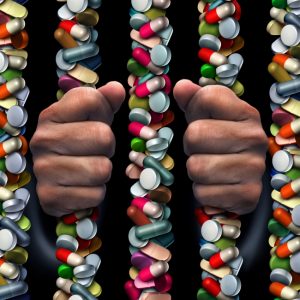 Prevention is the best strategy for dealing with any problem, and opioid use disorder is no exception. There are many things you can do to protect yourself from developing this condition, including:
Prevention is the best strategy for dealing with any problem, and opioid use disorder is no exception. There are many things you can do to protect yourself from developing this condition, including:
- Never using opioids in the first place
- Staying away from people and situations that may put you at risk for drug use
- Getting help if you are struggling with addiction or thoughts of suicide
- Seeking treatment for any mental health conditions you may have
- Educating yourself about the dangers of opioid abuse
If you are pregnant, it is especially important to be proactive about prevention. There are many resources available to help you stay safe and healthy, both for you and your baby. It is also important to talk to your doctor about your addiction and treatment options.
Opioid Use Disorder Treatment Without Suboxone
Treatment for opioid use disorder typically involves counseling and/or behavioral therapy in addition to medications that can help control cravings and withdrawal symptoms. These may include methadone, buprenorphine (Subutex), or naltrexone (Vivitrol).
Methadone is a long-acting opioid medication. This means it stays in the body and slowly releases into the bloodstream over time, which helps to prevent withdrawal symptoms and cravings. People who use methadone can take it orally or receive it at a clinic through injection. Methadone is only available at special clinics and facilities with licenses.
Buprenorphine is a long-acting opioid medication that can be taken as a pill, film, or dissolvable strip. It only needs to be taken once a day and it does not cause withdrawal symptoms when stopped suddenly. This means that if you feel you need to stop taking buprenorphine, your doctor can lower your dosage gradually and you can still go through withdrawal. You will also not experience intense cravings for opioids once the medicine is stopped.
Naltrexone is an opioid blocker that prevents the effects of opioids, including feelings of pleasure or “high.” You cannot get high if you are taking naltrexone, but if you take it while using opioids, it can keep you from feeling the effects of those substances. Naltrexone is usually taken as a daily pill and only works for 24 hours after taking it.
Conclusion
Opioid use disorder is a serious problem in the United States. The good news is that there are treatments available that can help people recover from this addiction. In order to get help, it’s important to seek out professional treatment. There are also support groups available for people who are struggling with opioid addiction. With time and effort, it is possible to overcome opioid addiction and live a healthy life.
A Word From Therapy Mantra
Your mental health — Your psychological, emotional, and social well-being — has an impact on every aspect of your life. Positive mental health essentially allows you to effectively deal with life’s everyday challenges.
At TherapyMantra, we have a team of therapists who provide affordable online therapy to assist you with issues such as depression, anxiety, stress, workplace Issues, addiction, relationship, OCD, LGBTQ, and PTSD. You can book a free therapy or download our free Android or iOS app.
